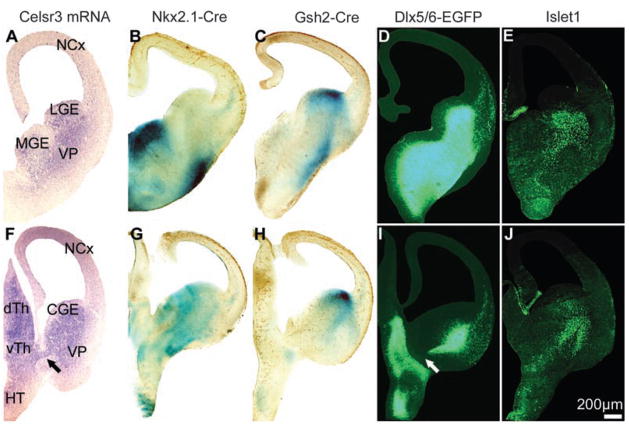Fig. 3.
The IC corridor expresses Celsr3, Dlx5/6, and Islet1 and is flanked with expression of Nkx2.1 and Gsh2. Coronal sections at rostral (A to E) and caudal levels (F to J) of the forebrain at E12.5, showing expression of Celsr3 [(A) and (F), in situ hybridization], activation of the LacZ reporter in ROSA26R| Nkx2.1 mice [(B) and (G)] and ROSA26R| Gsh2 mice [(C) and (H)], expression of Dlx5/6 [(D) and (I), EGFP in the transgene], and expression of Islet1 [(E) and (J), immunohistochemistry]. A central corridor is characterized by high levels of Celsr3, Dlx5/6, and Islet1, and low levels of LacZ. Arrows in (F) and (I) indicate a Celsr3-positive, Dlx5/6-negative zone that could explain partial growth of TCA in Celsr3|Dlx5/6 mice. CGE, LGE, and MGE, caudal, lateral, and medial ganglionic eminences.

